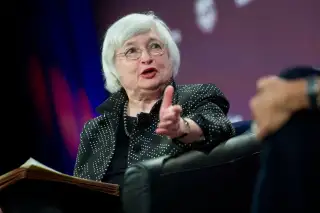The Fed Chair Says Stocks Look Expensive. Here's What She Means

On Wednesday, Federal Reserve chair Janet Yellen sparked some selling in the stock market when she remarked at conference that stock prices look "quite high."
Yellen didn't specify exactly how she was measuring stock valuations, but it's easy enough to guess at what she means. A standard way to judge whether the market looks cheap or frothy is to look at the share price of companies on the blue-chip S&P 500 index, relative to their earnings—the P/E ratio.
To smooth out the effect of booms and busts in corporate profits, many market analysts today like to look at a version of P/E called the cyclically adjusted P/E (or CAPE). It uses the current S&P level compared with the average of the past 10 years of earnings. It's also sometimes called the Shiller P/E, after Nobel Prize-winning Yale economist Robert Shiller, who popularized this method.
Right now, the Shiller P/E is about 27, up from about 15 in the immediate wake of the financial crisis.
Shiller recently dropped by Money's offices, and he agrees with Yellen: Stocks look kind of pricey now. But, he adds, that doesn't mean they couldn't get even more expensive.
And why, you might ask, does the Fed care what investors pay for stocks? More on that here.